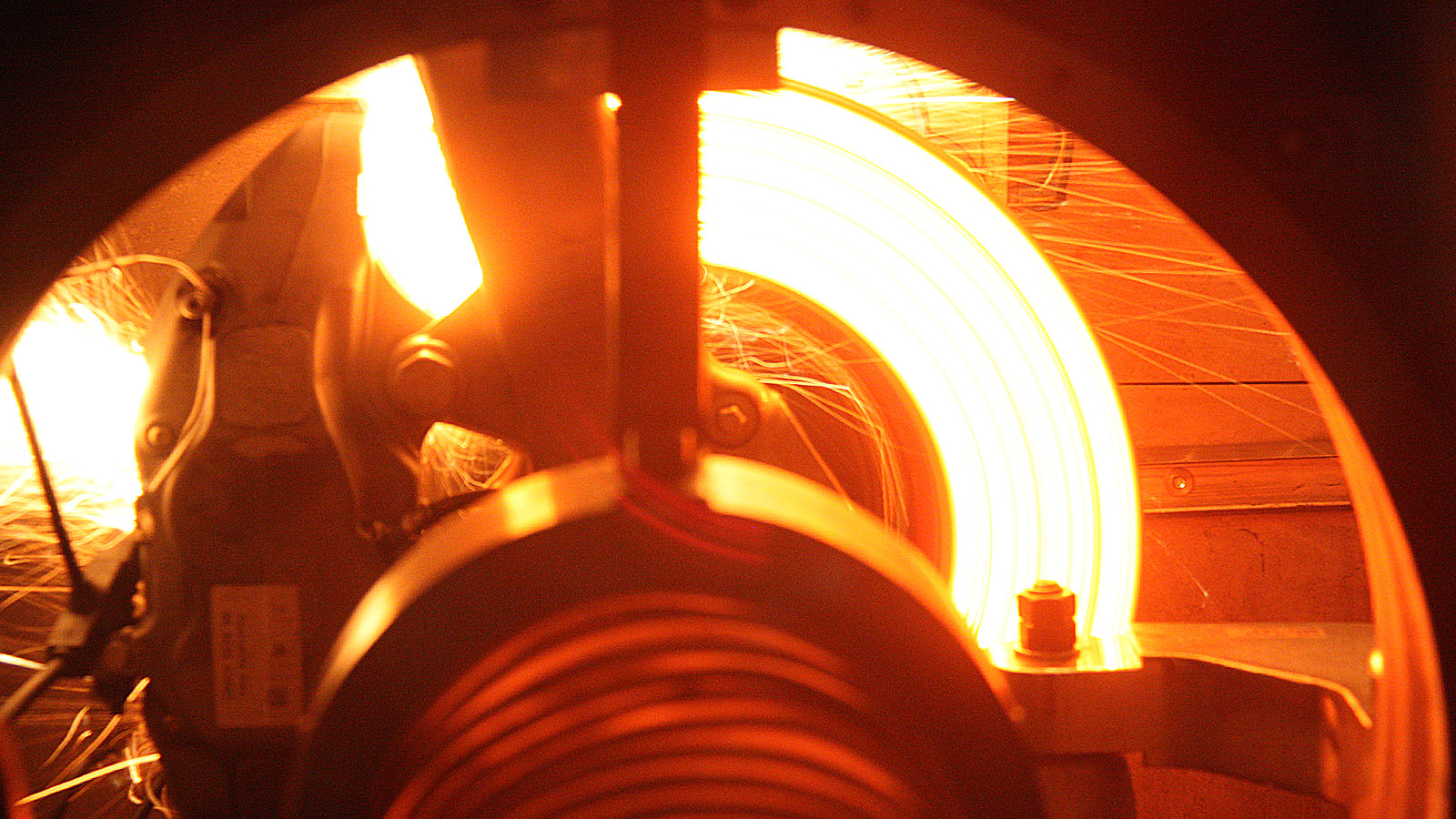Two Million Euros for a Unique Brake Testing System
Chemnitz University of Technology has received new large-scale equipment for the testing of brake components – the biggest large-scale equipment financing that the German Research Foundation has given the university
-

With the new brake testing system at Chemnitz University of Technology, numerous load situations can be realistically simulated – for example, a so-called ‘high speed fading test’. Photo: private (taken and shown during the international “μ-Symposium 2012”)
The German Research Foundation (DFG) has recently approved an application from Chemnitz University of Technology for large equipment. This clears the way for the acquisition of a so-called “Inertia Brake Dynamometer”. The device is used at the Professorship of Vehicle System Design (Prof. Dr. Ralph Mayer) and is primarily intended for teaching and research in the realm of developing and testing new brake components. The overall grant amounts to two million euros. Of this, 50% comes from the DFG, and 50% from the state of Saxony. The funding is thus the largest DFG award for a large-scale unit at Chemnitz University of Technology. However, due to the size and complexity of the machine, delivery is not expected until mid-2020.
Specific fields of application for the equipment include load measurement of brake assemblies during stop- and sustained-breaking, as well as the investigation of mechanical strength, crack resistance, deformation, wear and noise during braking.
The testing system is also unique with regard to its performance data, as well as the simulation of near-road and environmental road conditions, which have an influence on the braking behaviour of a vehicle. This applies to all types of cars, SUVs, and vans up to 3.5 tonnes. All tests can be carried out between -40 and 60 degrees Celsius, along with varying degrees of humidity.
“We are very pleased with this strong level of support, which opens up new and promising opportunities for automotive research at Chemnitz University of Technology,” says Prof. Dr. Jörn Ihlemann, Vice President for Research and Junior Scientists at Chemnitz University of Technology.
“Demand for road vehicle braking systems is growing – wheel brakes need to be cleaner and lighter, without sacrificing performance and comfort. Thanks to the new test bench concept, we can reproduce and carry out not only principle tests on individual components, but also apply realistic situations to the entire chassis of a wide range of vehicle classes. The performance data of the testing system, including conditioning options, provide the basis for a fast transfer of knowledge and potential economic benefits. Scientific work in vehicle systems, including other core competencies of our faculty such as Materials Science and Engineering, can be established in a sub-area of Automotive Engineering,” says Prof. Dr. Ralph Mayer, Chair of the Professorship of Vehicle System Design.
Unique research opportunities
To test newly-developed brake components, the use of special testing systems such as the ‘flywheel testing system’ is an essential part. As a part of the Chemnitz University of Technology application, the DFG made it clear that the application of the device towards investigations in noise and vibration (so-called ‘noise, vibration and harshness factors’ – NVH for short) and brake dust is of the highest relevance. Above all, this relevance is highlighted when considering the environmental goals set by the Federal Government regarding the reduction of CO2 and particle matter, as well as the prevention of traffic accidents.
For more information, please contact Prof. Dr. Ralph Mayer, Chair of the Professorship of Vehicle System Design at Chemnitz University of Technology, Phone: 0371 531-23340, E-mail: ralph.mayer@mb.tu-chemnitz.de.
(Article: Matthias Fejes / Translation: Jeffrey Karnitz)
Matthias Fejes
26.06.2019




